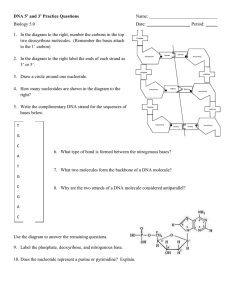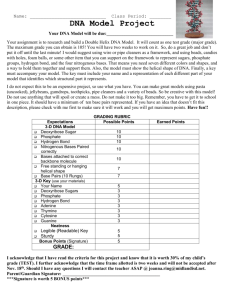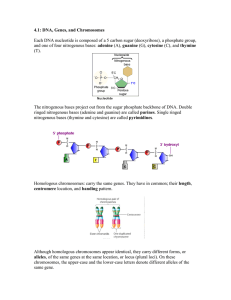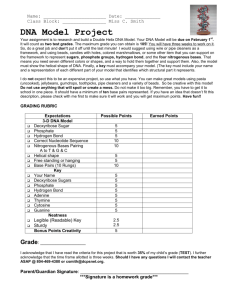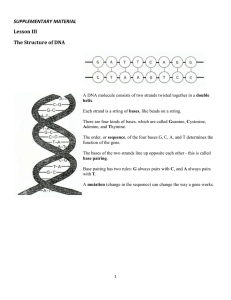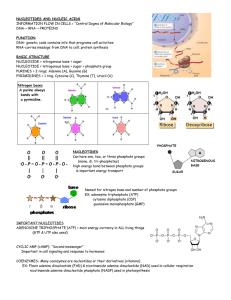Structure of DNA
advertisement
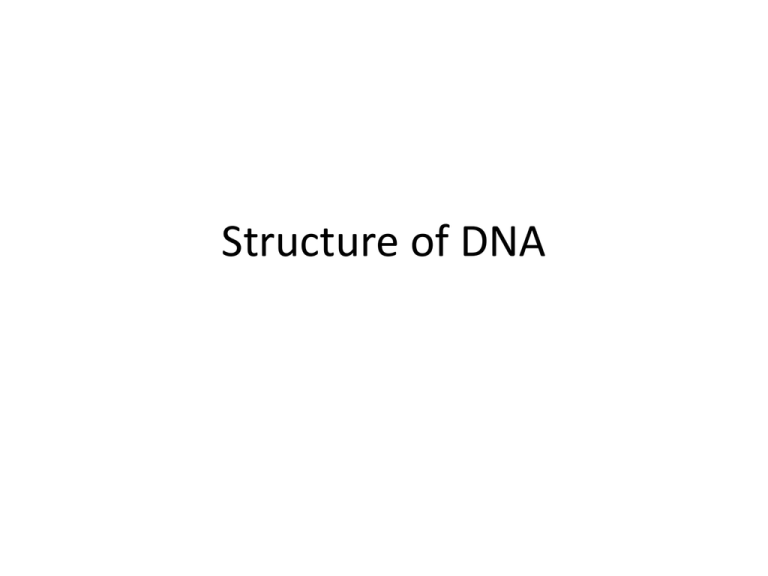
Structure of DNA • All organisms have a genetic code • DNA (deoxyribonucleic acid) contains the genetic code, and is the blueprint for the expression of physiological traits • Each individual organism has its own unique blueprint • The DNA structure is a double-stranded helical shape, twisted around a common axis • The width is 20 Å (angstroms) • Normally, the DNA strand can be found wrapped around specialized proteins called histones. When it not wrapped, the double-helical shape is more evident • The two backbones are comprised of repeating sugar and phosphate molecules • Each backbone is linked to the other via nitrogenous bases connected by hydrogen bonds • The right-handed helix makes a complete turn every 10 bases and 3.4 nm • The two backbones are anti-parallel—one strand running 5’ (prime) to 3’, the other from 3’ to 5’ • The “rungs” of the double-helical ladder are comprised of four nitrogenous bases (adenine, thymine, cytosine, and guanine) • Each base pair is held together by a hydrogen bond • A binds with T, and C binds with G (Chargaff’s rule) • The pentose sugar and phosphate group comprise the backbone • Each sugar-phosphate group is bonded to the next by a covalent phosphodiester bond • Each phosphate connects the 5’ carbon of one nucleotide to the 3’ carbon of another • The nitrogenous bases is bound to the pentose sugar • There are two classes of nitrogenous bases: pyrimidines and purines • Cytosine and thymine are pyrimidines, a one-ring structure • Adenine and guanine are purines, a two-ring structure
